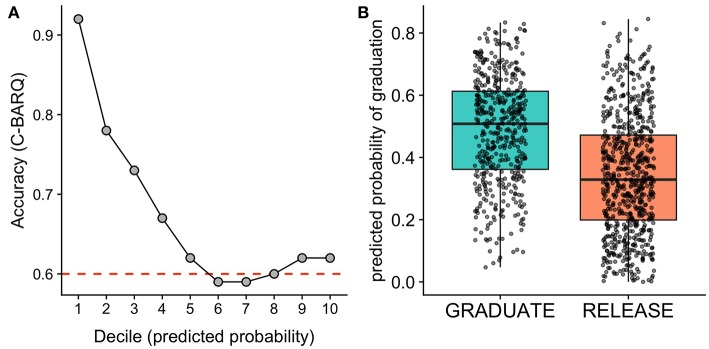Figure 1.
Results of models using the C-BARQ to predict assistance dog training outcomes. (A) Model accuracy as a function of deciles of the predicted probability of graduation for the test sample. The model was most accurate at identifying dogs with the lowest probability of success. The red dashed line indicates the No Information Rate (NIR), the accuracy that could be obtained by predicting the majority class for all observations. The C-BARQ predictive model performed significantly better than the NIR. (B) Predicted probabilities of graduation for dogs that ultimately graduated or were released from the program. Points overlaid on the boxplots reflect predicted probabilities for individual dogs. Horizonal jittering of points and transparency are used to reduce overplotting.

